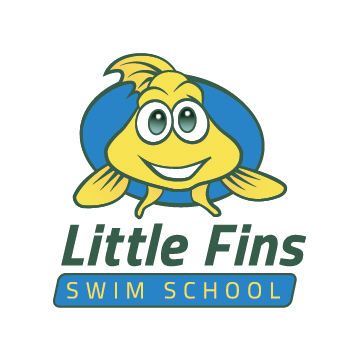“Water Independence” is Critical for Swim Lesson Success
/Water independence is a foundational swim skill that is taught across every level at Little Fins Swim School. So, what is “water independence?” Water Independence is a safety issue.
Water independence is critical to becoming “water safe.” SwiM lessons teach confidence and safety, creating safe swimmers.
Swimming is an individualized sport. Every swimmer relies on their own natural buoyancy, body, and self-mobility to float and move through the water. Every body is different. Water independence encourages an individual to figure out how they can best use their own body to swim without getting tired, or elevating a stress (panic) response.
When a swimmer feels confident and comfortable being independent in water, not relying on another person or object, they are more likely to survive an incident or accident. Water independent people do not see water as inherently dangerous.
Water independence also enables better swim technique. Speed, efficiency, and endurance in the water are taught through water independence. Little Fins' curriculum teaches each individual swimmer water independence across all levels.
When first beginning lessons, or learning to be in the water, poor water independence may look like:
Poor water independence May manifest as fearful behavior.
an extreme dislike of getting the face, mouth, or eyes wet;
a fear of “floating” in the water;
clinging/clutching to a parent or instructor.
In older individuals, or higher levels poor water independence may manifest like:
strenuously kicking to achieve a goal;
reaching parent or instructor arms as fast as they possibly can;
a swimmer becoming easily exhausted;
a preference for floundering, dog paddling, or treading sloppily instead of using learned techniques to reach their goal.
To help your child continue to build water independence outside of swim lessons, allow water “play” time. This will encourage building familiarity with water being present all around the face/body. Simple techniques you can do at home or at your public aquatic facility include:
splashing in the bathtub, and using cups to pour water gently over the body and face;
playing with a garden hose or sprinkler, encouraging “fun” water play;
encourage more time off the wall in open water;
establish rules such as “I will hold you and keep you safe, in return you can’t hold onto me;”
minimize “hold” time where swimmers are dependent on a parent while in deep water;
have your swimmer recover in a float position instead of grabbing you, and even when playing;
encourage maintaining a streamline or floating position as a way to keep the body from going vertical in the pool, which often leads to the doggy paddle;
discourage bad habits such as stopping and walking where they can stand or holding the wall or lap lane line in the pool
encourage water “play” at Home. Splash and make sure to cover the body and face with water to create water independence.
Water independence is critical to becoming “water safe.” Work with your family members to create an atmosphere of respect and love for the water, and you will be sure to have water independent swimmers. When some can move in multiple strokes or just hang out and do nothing but float in the water, you know that they are “comfortable” in the water, this is water independence.


















